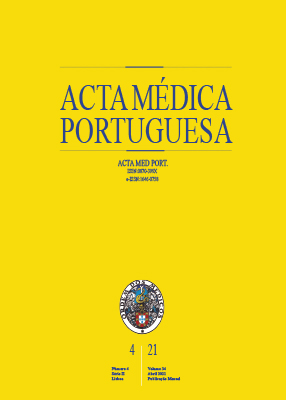Opportunistic Salpingectomy for Permanent Contraception: A Cross Sectional Study in Portugal
DOI:
https://doi.org/10.20344/amp.14033Keywords:
Ovarian Neoplasms/prevention & control, Prophylactic Surgical Procedures, Salpingectomy, Sterilization, Reproductive, Surveys and QuestionnairesAbstract
Introduction: Opportunistic bilateral salpingectomy has been proposed as an ovarian cancer risk-reducing strategy namely as a means of tubal sterilization. We aimed to assess what were the procedures for interval and peripartum sterilization carried out nationwide, related motivational aspects and influential demographic or professional factors.
Material and Methods: Cross-sectional study based on an original survey sent to Obstetrics and Gynecology specialists and residents from across the country in 2019.
Results: Two hundred and twenty-five answers were obtained from 42 institutions (37 from the public sector). Laparoscopic tubal electrocoagulation (61%) was the most common procedure for interval sterilization followed by salpingectomy (28%). Major reasons pointed out for not performing salpingectomy were increased operative time (48.5%) and procedure not considered (45.5%). In some hospitals, the choice of salpingectomy depended on specific criteria namely surgical team decision. During cesarean-section, sterilization was most frequently performed using the modified Pomeroy technique (54%), followed by salpingectomy (32.5%), with a statistically significant prevalence in the north of the country. Sixty-nine percent of Portuguese Obstetrics and Gynecology residents and specialists consider that salpingectomy should be the procedure offered to women asking for definitive contraception.
Discussion: Although data are limited, salpingectomy at the time of cesarean delivery appears feasible and safe and this context might represent the best opportunity for intervention.
Conclusion: Opportunistic salpingectomy is not the most common sterilization procedure performed in Portugal, but it was considered the best choice to offer. Its benefits and risks should be discussed with women.
Downloads
Published
How to Cite
Issue
Section
License
All the articles published in the AMP are open access and comply with the requirements of funding agencies or academic institutions. The AMP is governed by the terms of the Creative Commons ‘Attribution – Non-Commercial Use - (CC-BY-NC)’ license, regarding the use by third parties.
It is the author’s responsibility to obtain approval for the reproduction of figures, tables, etc. from other publications.
Upon acceptance of an article for publication, the authors will be asked to complete the ICMJE “Copyright Liability and Copyright Sharing Statement “(http://www.actamedicaportuguesa.com/info/AMP-NormasPublicacao.pdf) and the “Declaration of Potential Conflicts of Interest” (http:// www.icmje.org/conflicts-of-interest). An e-mail will be sent to the corresponding author to acknowledge receipt of the manuscript.
After publication, the authors are authorised to make their articles available in repositories of their institutions of origin, as long as they always mention where they were published and according to the Creative Commons license.









